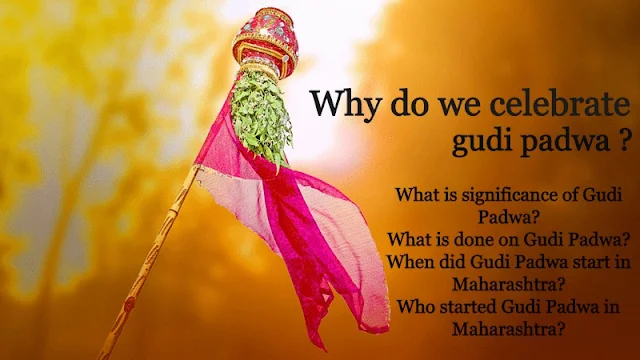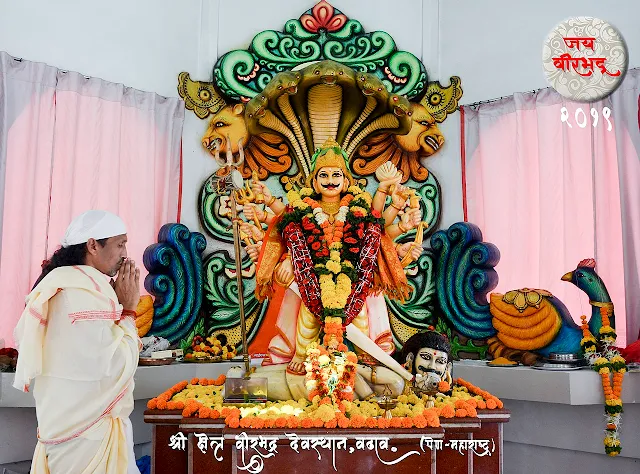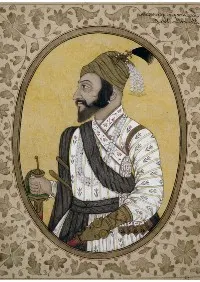 |
Guri Padwa Chaitra is the Sanskrit name of Shukla Pratipada. This has been praised in the early days of Chaitra month, as the Lunisolar signbook points to the beginning of the new year. The term Padva is derived from the Sanskrit word, which in Sanskrit translates to the main day of the glorious period of the moon called Pratipad.
- What is significance of Gudi Padwa?
- What is done on Gudi Padwa?
- When did Gudi Padwa start in Maharashtra?
- Who started Gudi Padwa in Maharashtra?
- What does GUDI mean?
- whats are the Interesting Facts about Gudi Padwa?
What is significance of Gudi Padwa?
According to the Luni-Solar calendar, Gudi Padwa is celebrated in the month of Chaitra and is considered an auspicious day that symbolizes the new year, celebrating the beginning of spring and the harvest of rabi crops. Maharashtrians celebrate the day by decorating their homes and making them colorful.
What is done on Gudi Padwa?
People celebrate the gudi padwa by cleaning their house and decorating it with lights and rangoli. To celebrate this auspicious day, both women and men wear new clothes. The women also wear traditional jewelry called dejhor.
Rituals
Prepare a color at the entrance due to Juri Padwa festival
Rituals
Prepare a color at the entrance due to Juri Padwa festival
- Raise the "Gur" flag and worship 5 to 10 minutes before sunrise.
- Raise the jar to the main gate of your house. Place the goodie to the right of your main door, which is considered an active part of your soul.
- Place yellow silk ornaments on jaggery with red flowers and trunks of mango tree.
- Identify a happy swastika with yellow powder and pine.
- Light candles during the Guri Padwa festival.
- The next day drink water from a copper vessel, place the bark of berries on the jaggery.
- Since it is believed that the interior of the Sun is very active on Guri Padwa-Marathi New Year Day.
- Inauspicious consciousness is transmitted through frequencies at sunrise.
- It is stored in a person's cell and subsequently consumed.
- Serve water to needy people.
When did Gudi Padwa start in Maharashtra?
The Festival Gudi Padwa mostly celebrated by the people of Maharashtra and goa. It falls on the first day (March-end or early April) of the Hindu month of Chaitra and is celebrated as New Year's Day in the state.
Who started Gudi Padwa in Maharashtra?
The great warrior of Maharashtra Chhatrapati Shivaji Maharaj, who started celebrating Gudi Padwa after his victory. Shivaji started the tradition of raising a gudi and since then every Marathi family has followed to welcome the new year.
What does GUDI mean?
The word Gudi is the word used to refer to the flag of Brahma, Gudi is made by a bright green or yellow silk cloth with zari brocade and on the other hand it's tying it on to a long bamboo stick. (which has been raised on this day) when the word padwa originates from the Sanskrit word padbabad or padavo, which refers to the first day of the bright moon phase.
Mythology Of Gudi Padwa
Many myths are associated with the Guri Padwa. You can read them below.
In the name, Goody suggests victory and prosperity. So, the people of Maharashtra celebrate this day as New Year, as it was erased and destroyed on the same day. Lord Ramachandra - The deity of all time says that after fourteen years of exile he killed Ravana.
It is reported that on this day Lord Vishnu took the form of Matsa avatar or fish.
There is another legend associated with this, for which a ceremony is performed when a flag is raised on a gurdi pada. It symbolizes the victory of Brahman, according to Brahma Purana, the universe was created on this day. The flag is also known as Indra Indra which represents and respects Lord Indra.
Another legend says that this day is auspicious because when Sakura won the war against the Huns. It is also considered as the beginning of the Saliwahan calendar, which began as soon as the Huns were subdued.
Goody Padwa is also a celebration of Shivaji Maharaja's legendary Maratha leader Vijay March. The festival was celebrated in honor of this great king, who had an empire that spread throughout the West.
In many places, the Guri Padwa is celebrated as the first day of spring as we all know that spring is the best time of the year and therefore refers to the rebirth and the new year. This is known as the intersection of spring, which is another sign of the beginning of spring.
Story
Gudi Padwa is also considered as a harvest festival, which shows that the rabi crop is over for the season. This is the time when mango and fruit are harvested.
There is a myth behind the Gudi Padwa in the traditional style. Guri Padwa is the most popular spring festival, marking the arrival of the New Year for the Marathi Hindus.The first day of the month of Chaitra will be celebrated in Maharashtra and its surroundings. According to the Hindu calendar, the New Year arrives.
It also marks the beginning of the new spring season. In Maharashtra, locals celebrate the festival by honoring victory against Chhatrapati Shivaji Maharaja and his enemies. On the same day, Lord Rama conquered Bali, so the festival is celebrated as popular by all Hindu rituals. to show the symbol of victory.
History says that this is the day when Lord Brahma created the universe. Therefore, for followers of Hinduism, this day is very important. It falls on the Chaitra Shukla every year based on the lunisolar calendar. Maharashtrians are the main followers and observers of Gudi Padwa.
The same festival is celebrated as Ugadi in Karnataka and Andhra Pradesh, and Sindhi calls it Chetty Chand. The original Sanskrit word "Chaitra Shukla Pratipada" is Guri Padavar. The traditions begin on this day according to the new year, which is a sixty-year cycle.
All sixty-eight are identified by unique names. According to the Hindi calendar, Gudi Padwa will be celebrated on Wednesday, March 25, 2020.
whats are the Interesting Facts about Gudi Padwa?
1. Do you know that Guri Padwa was the famous Satavahana king of ancient India, who symbolized the victory of King Shalibhan.
2. The pulpit flag also represents the rainbow.
8. Do you know that Gudi Padwa is also celebrated in Manipur? There, it is named after Sajibu Nangma Panba Chiroba.
4. It is also celebrated in Kashmir by Hindus and scholars in Kashmir.
5. In Punjab, the festival of Gudi Padwa is celebrated as Baisakhi which arrives in Bengal on 5 or 5 April, it is celebrated as Bihu as Naba or Barsa of Assam, in Tamil Nadu it is celebrated as Putuvaadu goes.
If you like this blog then please like and share also comment your thoughts in the comments.


Comments
Post a Comment